How to Get Rid of Acne
By Abby Vinas
Acne Treatment
•
2 Comments
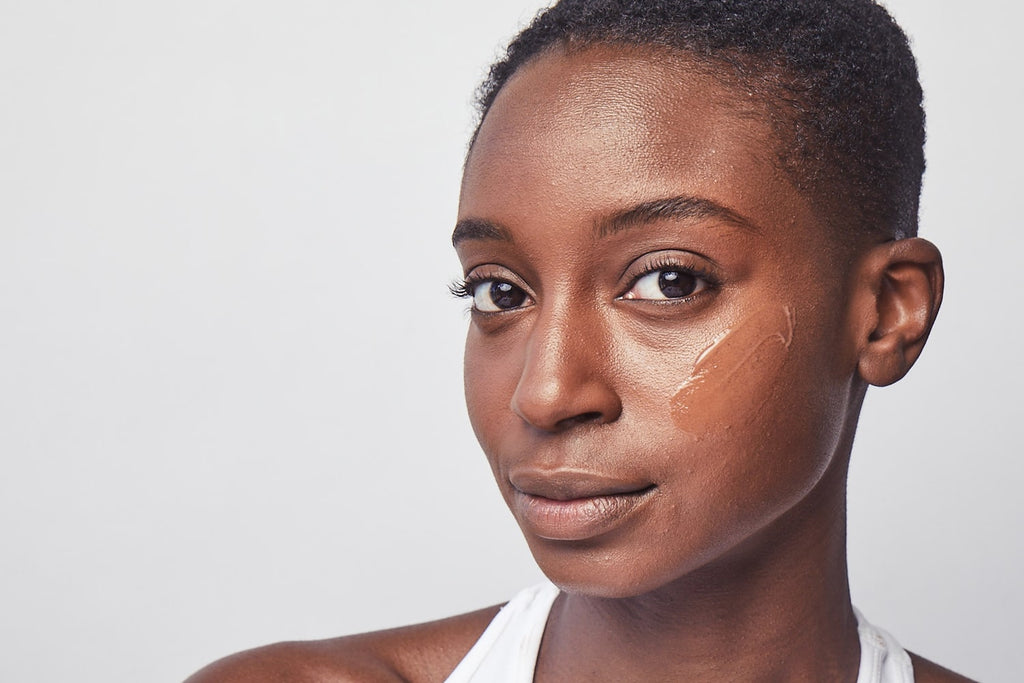
If your skin is prone to problematic pimples, we can help. Blemishes in any shape or form are never fun to deal with, and a nasty breakout can negatively affect both your complexion and confidence so we're sure you want to know how to get rid of pimples fast.
If you feel like you’ve tried everything, don’t give up hope. While there’s no secret recipe to clear skin, with the right acne treatment and a commitment to healthy skincare practices (including some nifty home remedies), you can take back control of your skin and ultimately, improve your complexion.
- Identifying Your Blemishes
- The Different Types of Acne
- What Causes Acne and Pimples?
- How To Get Rid of Pimples
- What Type of Treatment Is Right for You?
- 5 Natural Acne Remedies to Try
- Dos and Don'ts
To give you the best chance at banishing breakouts, we’re here to break down the ins and outs of acne, including what they are, how they form, and the best ways to get rid of pimples. New or old, mild or severe, with our help, you can figure out how to get rid of acne once and for all. Let’s get started!
(Read through the full article to understand your acne and best arm yourself for combating stubborn blemishes, or jump ahead to the How to Get Rid of Acne section to learn exactly how to get rid of pimples.)
Start by Identifying Your Blemishes
The first step to creating an effective skincare routine is identifying which type of blemishes are troubling you.
Blackheads
What are blackheads? Blackheads are acne lesions caused by clogged pores. Blackheads are open comedones, leaving the top of the clogged pores exposed to air on the skin’s surface. When the melanin makes contact with the air, it becomes oxidized and turns them a darker color. They’re usually black but can also appear gray, yellow or brown.
While they’re usually found on the face, especially on the nose and T-Zone, you might also find them on your back, neck, chest, shoulders, and arms. Blackheads are a mild form of acne and cause less inflammation which means they’re usually painless.
Whiteheads
As opposed to blackheads, whiteheads are closed comedones that appear as small, white, round bumps on the skin’s surface. Whiteheads form when a clogged pore is trapped by a thin layer of skin leading to a buildup of pus. They range in size and can appear on the face or all over the body. Like blackheads, they are considered a mild form acne.
Papules
If pimples get trapped beneath the skin’s surface, they can form papules: red, sore spots that might feel hard to the touch. Papules are small (less than 1 centimeter in diameter) with distinct borders; when clusters of papules occur near each other, they can appear as a rash and make your skin feel rough like sandpaper.
Because they’re inaccessible, they’re a bit more difficult to treat and are therefore considered moderately severe acne. Even though they can be very frustrating to deal with, they should not be popped because it can result in long-term scars that may be unresponsive to acne treatments.
Pustules
Pustules are another form of moderate acne that appear when white blood cells attempt to fight off an infection. They are very similar to papules except they are filled with liquid pus, giving them a white or yellowish appearance. They’re accompanied by surrounding inflammation and are usually tender and hard to the touch.
Nodules
Nodules are abnormal tissue growths that create hard, raised lumps that are more than 1 to 2 centimeters in diameter, with the potential to reach up to the size of a hazelnut.
They commonly form in regions such as the face, neck, armpits, and groin, although they can also develop on internal organs such as the lungs, thyroid, and lymph nodes. This type of severe acne should be consulted by a doctor, as it might be indicative of a more serious condition.

If you’re ready to learn how to remove pimples, skip ahead to find out what treatment options you have. However, we recommend reading a bit more about the different types of acne to make sure you select the most effective methods for your needs.
The Different Types of Acne
In addition to the specific blemishes that typically affect your complexion, it’s important to pinpoint which type of acne you’re suffering from to understand how to get rid of acne.
Acne Vulgaris
Acne vulgaris is the medical terminology for common acne. This type of acne is most common and can either be inflammatory or non-inflammatory. It’s characterized by open or closed comedones, inflamed papules, pustules, and nodules. It usually affects areas of skin with the most sebaceous (oil) glands, including the face, upper part of the chest, and back.
Cystic Acne
Cystic acne is the most severe form of acne vulgaris and can be caused by a variety of factors. This type of acne sees painful lesions develop deep within the skin, which could result in permanent scarring or hyperpigmentation. Cystic acne is easily diagnosed due it its pronounced, inflamed lesions. However, you should consult a dermatologist to rule out other skin conditions that often mimic acne such as rosacea, psoriasis, or perioral dermatitis.
Hormonal Acne
Hormonal acne is exactly what it sounds like: breakouts that are tied to fluctuations in hormones. When hormones fluctuate, which happens during puberty and menstruation, it causes an influx of androgens which women are particularly sensitive to. In large amounts, it can cause excess sebum production, making breakouts worse.
If your skin flares up around the same time each month, and blemishes tend to occur in the same spot (chin, cheeks, jawline), and is characterized by pimples that are deep and cystic, your acne might be hormonal.
Acne Inversa
Acne inversa is not actually acne in the traditional sense, but can closely resemble the blemishes associated with a breakout. The condition is medically known as hidradenitis suppurativa and is a skin disease that is characterized by pimple-like bumps usually observed where two skin areas may touch or rub together such as the underarms, folds under the breasts, and between buttocks cheeks.
It is critical to seek treatment for acne inversa as soon as possible as these lesions can become painful and lodge deep into the skin or even become cancerous.
Clogged or Congested Pores?
A transformative pore purifying masque for a refreshed, tighter, toned appearance.
Get Refreshed
What Causes Acne and Pimples?
Before you can determine how to get rid of pimples, you need to understand the cause of your acne and what factors are likely making it worse. That way, you’ll be better equipped to proactively prevent its formation, rather than just treating it after the fact.

Clogged Pores
In the simplest sense, acne is caused when pores containing hair follicles and sebaceous (oil) glands become clogged. The sebaceous gland is responsible for producing sebum, an oily substance necessary for skin to stay hydrated and soft. However, too much sebum can plug the opening at the top of the pore, trapping a buildup of oil, dead skin cells, and bacteria leading to acne lesions.
Hormones
Hormonal fluctuations and an imbalance of estrogen and testosterone levels have proven to be a direct cause of acne because they increase the likelihood of clogged pores. For this reason, many experience an onslaught of breakouts during puberty, menstruation, and pregnancy.
This is because these hormonal fluctuations increase the level of androgens, triggering more oil production and in the end, causing more clogged pores.
Genetics
Acne is at least in part due to hereditary factors. Those whose parents have a history of acne are likely to struggle with the same condition. Your genetic makeup can determine:
- How sensitive your skin is
- How reactive you are to hormonal fluctuations
- How quickly you shed skin cells
- How you respond to inflammation
- How strong your immune system is to fight off bacteria
- How much oil your sebaceous glands produce
The list goes on and on, but the key takeaway is that your genetics heavily influence the condition of your skin. Most importantly, it will be a significant factor in how to get rid of pimples.
There has been a long-observed link between higher stress levels and the incidence of breakouts, and studies have shown that stress can worsen acne’s frequency and severity. Sebaceous glands contain receptors for stress hormones. When you’re more stressed, this kicks sebum production into overdrive.
Not only do those who tend to feel stressed often fall victim to this vicious acne cycle but more anxious types have a tendency to also pick their skin and pop pimples under stress. This bad habit can exacerbate blemishes by pushing the buildup deeper into the pore, inducing cellular damage, rupturing cellular walls, and spreading bacteria.
Depression
Depression and acne often go hand-in-hand. Those who suffer from depression frequently succumb to poor hygiene habits, struggle with sleeping issues, and take certain medications, all of which can lead to acne over time. On the other hand, many people who have acne tend to experience depression because of the toll it takes on their self-esteem. Figuring out how to get rid of pimples may seem impossible, but there is hope for clear skin.
If you suffer from depression, you should speak with a mental health professional. To address your skin condition, visiting a dermatologist and using healthy skincare products can help you get your acne under control so you can look and feel your best.
Diet
There’s much to be said about the relationship between your diet and acne. Although it doesn’t directly cause acne, certain foods can contribute to the severity of breakouts. If you practice good skincare, but you still can’t figure out how to get rid of your acne, you may want to take a look at your diet.
Acne-Worsening Foods
Sugar: For starters, sugar can use up important nutrients including valuable acne-fighting minerals, particularly zinc because it’s used to process the sugar you consume. Sugar also causes a spike in blood sugar levels, leading to high insulin levels, which creates increased sebum production and blocked pores. Additionally, studies show that sugar also has an inflammatory effect which can worsen existing acne.
Processed Foods: Ingredients found in processed and junk food such as chips, breakfast cereals, and white bread are acne-inducing villains. Preservatives and additives can trigger hormonal fluctuations, and greasy fast food leads to inflammation all over your body – including your face. Refined grains are quickly broken down and turned into sugar, which creates a terrible effect on skin by aggravating acne.
Carbohydrates: Diets with a great deal of either refined or whole grains supply the body with an abundance of carbohydrates. Carbs are broken down into sugar, and too many might lead to insulin resistance, which can cause your body to produce even more insulin. Higher levels of insulin can result in excessively oily skin that is prone to acne.
Trans-fats: Trans-fats are a health nightmare and do no favors for your acne. They trigger huge inflammatory responses by activating a response in the immune system, causing blemishes to swell and redden. When consumed regularly, individuals often suffer from chronic inflammation.
Dairy: Dairy products – especially milk – contain androgen precursors which can easily be converted to testosterone if exposed to particular enzymes. Pores within the skin contain said enzymes, and can therefore lead to the formation of pimples. Milk also contains the hormone IGF-1, which in excess can result in additional sebum production. As we know, higher levels of sebum often lead to acne breakouts.

Acne-Fighting Foods
When trying to figure out how to get rid of acne, you should try to eat foods that have anti-inflammatory qualities and are rich in nutrients.
Low-Glycemic Diet: Since foods that fall into the low-glycemic index do not cause spikes in blood sugar, eating foods that fall into this category can improve your acne. Some foods that have a low-glycemic index include multi-grains, apples, and lentils.
Vegetables: Adding more leafy greens to your diet benefits all aspects of your health, including the quality of skin. They deliver essential minerals, vitamins, and antioxidants. The benefits of antioxidants such as vitamin A for acne and overall skin health have been proven. Antioxidants lessen the time breakouts last and can make pimples smaller and less painful.
Seafood: Oily fish like salmon and sardines have highly saturated levels of omega 3 fatty acids, which have major benefits for skin, including inflammation reduction. Some types of fish also contain carotenoid antioxidants which also improve skin quality. Omega 3 can also be found in fruits and nuts.
Green Tea: Green tea delivers a multitude of benefits, including lower blood pressure, reduced cholesterol levels, improved bone density, improved memory and even the prevention of cancer. With regard to your skin, green tea can help reduce sebum production. It also has anti-inflammatory qualities.
While drinking green tea for acne can be helpful, its treatment is more effective when applied topically directly onto the skin. Our skincare products that are part of our 3-step system include green tea extract for gentle, soothing acne treatment.
Read on for traditional treatment solutions that can help get rid of pimples, but you can get a head start by addressing any of these factors that might be contributing to your breakouts.
How To Get Rid of Pimples
When it comes to figuring out how to remove pimples, there are generally three different treatment routes. The answer to “how to get rid of acne” is typically unique to each individual. Before deciding on a treatment plan, you should speak with your dermatologist and consider the benefits and drawbacks of each of these options.

1. Topical Treatment
This refers to acne medications that are applied directly onto the skin, such as creams, gels, serums and ointments. Topical treatments can be found over-the-counter (OTC) or at a pharmacy when prescribed by a doctor.
If you’re shopping for topical treatment solutions, look for products that contain acne-fighting ingredients such as salicylic acid, benzoyl peroxide, and glycolic acid that can penetrate pores to loosen and dissolve debris. Topical solutions are generally best suited to treat mild to moderate acne.
2. Oral Medications
Oral acne medications such as systemic antibiotics and hormonal agents work internally to improve acne, rather than a topical treatment like the ones we discussed above. Antibiotics work from the inside out to help clear your complexion by killing the bacteria lodged within infected pores. Hormonal agents such as birth control are frequently used to regulate androgen levels and treat hormonal acne.
3. Self-Care
Self-care practices and lifestyle choices can also improve your complexion. Nutrition, stress management, ample sleep, and good hygiene are all important for healthy, clear skin and might be able to prevent blemishes from forming in the first place. Self-care practices can—and should—be used in conjunction with all skincare treatments.

Want to know how to get rid of acne fast? It’s usually a comprehensive approach to clear skin that works the best!
What Type of Treatment Is Right for You?
So what kind of treatment is most effective on which type of acne? Here are the top suggestions:
Hormonal Acne
Talk to your doctor to see if birth control is the best option to treat your hormonal acne. In the meantime, aim to keep reduce your stress, eliminate acne-worsening foods from your diet, improve your skincare routine, and try some of the natural home remedies we recommend below.
Acne Vulgaris
Comedones associated with acne vulgaris are usually easy to clear using over-the-counter products like our clinically-proven skincare line, but papules and pustules are a little tougher to treat. The first step is to make sure you’re properly washing your face with a vegan cleanser and using products that reduce inflammation and swelling. Traditional antibiotic therapy should relieve the symptoms of your acne nodule and gradually decrease its size.
Cystic Acne
Cystic acne will most likely need to be treated with antibiotics. In most cases, topical solutions are not strong enough to reach the infected pores lodged deep within the skin. To jumpstart your acne’s healing process, consider a chemical peel or microdermabrasion.
Acne Inversa
Typically, this condition is managed using medications and corticosteroid injections for pain. Often, acne face wash and medicines can also be helpful but are not sufficient on their own. Surgery may also be recommended if conservative treatment methods are not effective.
Clearer skin in as little as two weeks.
This 3-step routine combines the most effective (clinically-proven) acne fighting ingredients with powerful plant intelligence to leave your skin nourished, refreshed, and clear.
Learn More
5 Natural Acne Remedies to Try
If you prefer to try the natural route, or want to do everything you can to supplement your acne treatments to get rid of pimples fast, you can try these home remedies:
1. Apple Cider Vinegar
The organic acids found in apple cider vinegar have been shown to fight bacteria and reduce inflammation, making it a popular natural remedy for breakouts. The mixture you use should contain 1 part apple cider vinegar and 3 parts water. If you have sensitive skin, we suggest adding more water to dilute the solution.
Only let it sit on your skin for about 20 seconds or less, then rinse and gently pat dry. You can do this up to two times daily.

2. Tea Tree Oil
Another affordable natural remedy you can use is tea tree oil as an alternative topical spot treatment. With anti-bacterial and anti-inflammatory properties, tea tree oil can prevent and treat breakouts. However, use with care because some people develop an allergy to the oil.
3. Sulfur-Based Methods
Sulfur helps fight bacteria and unclogs pores. However, dermatologists caution that it is better as a spot treatment than a solution for a larger area of acne. You can apply it to one lesion for specific pimple treatment or smaller broken-out areas.
4. Take Fish Oil Supplements
As we explained earlier, Omega-3’s can help manage oil production and reduce inflammation. Taking a fish oil supplement may be a good way to integrate these acids into your diet if you don’t like fish.
5. Exercise Regularly
We all know exercise is important but did you know it plays a critical role in hormone regulation, increases blood flow, and reduces stress—all of which contribute to a clear complexion.
Want something that’s dermatologist tested to banish breakouts? Our cruelty-free acne products are made using safe, naturally-derived ingredients that will help you clear your skin.
Essential Dos and Dont's
Before you go, read through these general skincare dos and don’ts to help you achieve a clear complexion:


Abby Vinas
Abby Vinas has long been an active member of the holistic health community, advocating in favor of its benefits to both our physical and emotional well-being. Her commitment to leading a healthy lifestyle has made her an authority on self-care practices. Abby is passionate about fitness, nutrition, and proper skincare, and is also an avid lover of avocado toast and dog-petting.
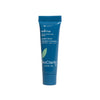
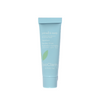
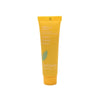
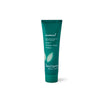










Getting a good facial is very important when you have acne you to take care that it doesn’t spread and you don’t try and aggrevate it. I recommend going to a Medi care Boutique. There is a really good one in New York called Glo Skin Medi Boutique
After completing cosmetic training i have learned many new ways to get rid of pimples. This blog is also helpful for me to get some info about reducing pimples.